Sukanya Verma in Mumbai
In our Classic series, we re-visit beautiful old Hindi movies. Here, we look back at Anil Kapoor-Sridevi starrer Lamhe (1991).
There are two kinds of great cinema. One, where you’re afraid to watch a film again so as to not lose that awe-inspiring first impression and another where the experience gets better, more personal with every viewing.
For me, Lamhe falls in the second category.
I have lost count of times I have watched one of Yash Chopra’s most acclaimed creations, which came out while I was still in school.
What’s incredible is, almost everyone I know from my generation, loved and appreciated it immensely. And even though the audience is never concerned about business, I wondered what went wrong. Perhaps, in the era of video libraries and cable television, our lot wasn’t sizeable enough to make it the box office success it deserved to be? (Interestingly, it performed very well overseas.)
The explanation I read most remains that Lamhe was ahead of its time.
In an interview with director Karan Johar, the King of Romance scoffed at this reasoning, “If nineties is before time, I can’t make t his film when I am no more. ”
And I am so glad he did. Beyond the realms of commerce, Lamhe, which revels in moments of love and laughter, in due course, earned the designation it always deserved -- a classic.
.
A younger-looking Anil Kapoor
Image: Anil Kapoor in LamheChopra fancied the idea of Lamhe since the early 1980s but wouldn’t start work on it till he had a blockbuster in 1989’s Chandni. It was imperative that Lamhe is made without an iota of compromise or modification, a privilege that’s only granted after a hit.
Based on his five-minute summary, child actor-turned-screenwriter Honey Irani developed a full-fledged script, which was approved at once.
Considering the story spans two decades, appearances play a crucial role in lending conviction to the emotions.
Having relished the experience of working with a thorough professional and talent like Sridevi in Chandni, Chopra knew he didn’t have to look further for the mother/daughter roles of Pallavi and Pooja.
A 30-something Anil Kapoor shaved off his trademark moustache (resembling his younger brother, Sanjay) to look half his age. He looked equally refined and responsible sporting grey sideburns as a man approaching his forties.
Waheeda Rehman and Anupam Kher, with whom Chopra had worked previously and shared a comfortable camaraderie, were signed on to play the part of soothing nanny and BFF.
The barren, burning and beautiful deserts of Rajasthan
Image: Sridevi in LamheLamhe isn’t a crowded exercise in opulence. Though its characters are continuously surrounded by luxury and gorgeousness, the ambiance is intimate, accessible and affectionate.
In this thoughtfully penned script by Irani (which fetched her a Filmfare trophy), every page reveals a telling facet or trait of the characters we will grow to care for, root for.
The film opens with London-bred Viren Pratap Singh (Anil Kapoor) driving through the barren, burning deserts of Rajasthan with his caretaker Daaijaan (Waheeda Rehman), marvelling at the folk singers ability to rest contentedly under the hot sky, till they land at their ancestral home (Jaipur’s Rambagh Palace).
Lamhe neatly underscores the 18-year-old’s closeness to his devoted Daaijaan, the only parent-figure in his life.
To Kapoor’s credit, his reticence, petulance and little boy candour around his beloved Daaijaan never hits a contrived note.
Kapoor loses the baggage of swaggering image associated with him in films like Tezaab, Ram Lakhan and Jaanbaaz to embody the subtle, soulful and sophisticated Viren of Lamhe with his reserved body language and genteel dialogue delivery.
Love struck
Image: Sridevi in LamheA complete introvert, Viren is instantly smitten by his vivacity-personified family friend, Pallavi (Sridevi) after watching her frolic in the rain to Megha Re Megha.
Pallavi teases him about touching her feet arguing she’s elder to him by a few years and Lamhe’s first instance of age difference comes into play.
Given his British upbringing, Viren couldn’t care less about such a trivial technicality. He has much more exciting things on his mind. Like camel riding through the magnificent dunes wearing traditional attire or else “tourist lagoge aur Rajasthan tumse dil kholkar baat nahi karega,” Pallavi warns him.
All of the state’s characteristic elements -- architecture, folk tunes, textiles, décor, lehengas, lehariyas, pagdis, mojris, et al is minutely captured in cinematographer Manmohan Singh’s camera, art director Sudhendu Roy’s designs and costume designer Neeta Lulla’s aesthetics (the latter won a National Award for her work here).
Awkward attempts at getting on top of a camel prove fruitful as he (and us) discovers Rajasthan’s splendour and tradition of rich folk music and dance in the poetic night sequence shot around a campfire -- Morni Baga Ma Bole.
Choreographed by Saroj Khan, watching an animated Sridevi, in bold hues of yellow and blue, move so seamlessly in sand is a sight to behold and never forget.
That is exactly the sort of impact it has on Viren as well. Alas, a rude realisation waits.
Heartbreak
Image: Sridevi and Deepak Malhotra in LamheAt the funeral of Pallavi’s father, Viren learns of her attachment to Squadron Leader Siddharth Bhatnagar (model Deepak Malhotra realising Yash Chopra’s fondness for casting men in uniform).
A weak, lifeless Malhotra (wearing a wardrobe size that seems to be intended for Vinod Khanna) ruins a perfectly dramatic moment with his unintentionally hilarious dialogue delivery -- the infamous 'Pallo.'
Before we can cringe further, the scene cuts to a crestfallen Anil crying his heart out in Daaijaan’s lap. Many a lovers have gotten their hearts broken in a Yash Chopra romance but Viren’s innocence and grace distinguish him from Silsila’s intensity or Kabhi Kabhie’s bitterness.
Magnanimous as he is, Viren arranges for Pallavi and Siddharth to wed in style and returns to his life in London refusing to remain in contact. Between these two events, there’s a tender moment wherein Viren asks Pallavi if he can address her by name. They’re interrupted before he can get a reply.
It’s old school, yes. So is Viren.
Pooja, an exact replica of Pallavi
Image: Sridevi and Anil Kapoor in LamheOblivious to his feelings, Pallavi keeps writing to Viren hoping for a reply. They do meet again but under extremely unfortunate circumstances. Though Siddharth dies on the spot during a road accident, a pregnant Pallavi is in danger of losing her life or her child’s. While she insists it be the child, Viren chooses Pallavi. (There’s an interesting arc here if you take in account what this child goes on to become for Viren at the end of the story. Luckily, no one told her.)
Pallavi doesn’t make it.
After her demise, he scatters her ashes in her favourite spot -- in the heart of the vast dunes.
Watching it frequently has made me appreciate the extent of care and detail gone in the writing/making of Lamhe.
Assigning the baby girl to Daaijaan, Viren leaves for London and returns every year to perform the rituals of Pallavi’s death anniversary purposely ignoring the child, now called Pooja and her birthday. “Uska janamdin toh main kabhi bhool hi nahi sakta, Daaijaan,” he admits with a lump in his throat.
Over the years, the mysterious absence of Viren becomes an object of fascination for Pooja. She begins to romanticise about “Kunwarji” in her adolescent world, which maintains a safely pristine exterior.
On her 18th birthday, they finally come face to face. Viren, now even more sombre and serene, is stumped -- Pooja (Sridevi again) is an exact replica of Pallavi.
Chopra plays with Viren’s instant confusion and attraction with some careful deliberation. If the first hour is dedicated to Pallavi, the next two hours to follow are completely dominated by Pooja.
Anupam Kher adds humour
Image: Sridevi, Anupam Kher and Anil Kapoor in LamheLamhe now shifts base to London when Pooja and Daaijaan arrive to holiday in Viren’s huge mansion in England. It’s also the segment when Anupam Kher’s Prem gets to flex his comic chops and infuse Lamhe with zest, pep and humour.
He’s the opposite of Viren in every sense but beneath that bouncy exterior is a caring, selfless friend. Watch him spar with Viren’s crabby girlfriend Anita (Dippy Sagoo) with a volley of wit, “Asliyat yeh hai Ms Anita Malhotra, ke hum dono ek doosre ko tolerate kar rahe hain. In fact, hum teeno ek doosre ko jhel rahe hain. Tum iski wajah se mujhe aur main, you know what I mean?”
Sagoo is not as pathetic as Deepak Malhotra but annoying enough for you to anticipate her dismissal. Chopra probably realises this and rewards us with a crackling face off between Anita and Pooja at the coffee shop. No prizes for guessing who shuts up whom.
Daaijaan, Prem, Viren and Pooja -- the family of four creates such a nest of warmth and bonhomie, it’s impossible not to feel the connection. For sometime, Lamhe unabashedly indulges in all play no work philosophy over sightseeing, medley of old Hindi classics (which offers a lovely tour of the huge house Viren lives in), sweet banter and coy suggestions.
Lamhe treads in breakthrough territory in terms of storytelling but Chopra doesn’t deprive it of his signature touches. The heroine is fabulously styled -- she wears white (though not as often), there is rain, there are flower fields, there is Switzerland set to Shiv Hari’s magical soundtrack, which transforms Chandni’s romantic background tune into Kabhi Main Kahoon. That along with Morni Baaga, Meri Bindiya soared the popularity charts but Hariharan’s rendition of Yeh Lamhe is a personal favourite.
A bold subject
Image: Sridevi in LamheEven then it’s never meant to distract from the real point of the story. If anything, it’s only bringing Viren closer to see the difference between holding on to a dead memory and ignoring an alive moment.
Regarded as a bold premise at that time, visible care is taken to not go overboard with the physicality of romance.
The only hint of intimacy is depicted when a bare-shouldered Pooja sits next to Viren and lets him put a sparkling pendant and chain around her neck.
He is conscious about the age difference between them even though, where Pallavi was concerned, it didn’t matter. But the way Chopra sees it; age isn’t in the way of Viren and Pooja. Letting go is. Some of Lamhe’s most powerful scenes are built around Viren’s reluctance and Pooja’s persistence.
Like when he rebuffs her, a hurt and humiliated Pooja expresses her rage in a passionate solo dance. Or when he tells her the painting she mistook as her own is that of her mother’s, a shocked Pooja tells him, “Aapke liye main saari duniya se lad sakti hoon. Magar kisi parchayi se nahi lad sakti.”
I love how Chopra constructs this entire sequence around one picture -- her boundless joy on seeing the picture, dolling up in traditional wear to resemble the picture (against the Meri Bindiya song) and then learning the hurtful truth about the picture.
Sridevi's entire being is in sync with her characters
Image: Sridevi and Anil Kapoor in LamheIf Anil Kapoor lends Viren a perfect blend of dignity, denial and restraint; Sridevi demonstrates the difference between a woman and a child woman as Pallavi and Pooja.
While Pallavi is effervescent, independent and poised, Pooja is playful, impulsive and frank.
Sridevi’s entire being is in sync with her characters -- her eyes, smile, lips -- every bit of her emotes and communicates to the screen. She’s never looked this beautiful.
The actress lost her father during the making of the film. She took a brief break and returned to shoot a funny scene where she’s fooling around with Waheeda Rehman with her face covered in bleach. The show goes on and her brilliance conceals her pain.
Rehman’s benevolent demeanour makes Daaijaan even more special. (Like Kabhi Kabhie she sings a lullaby here too. Nanhi Pari becomes Gudiya Rani.) As the woman with no family of her own, dedicating herself to two children going through the exact same motions in matters of the heart, she conveys her inner turmoil of watching them suffer with unspoken entitlement.
She lets her hair down too. And how. That moment when she shakes a leg to her famous song from Guide -- Aaj Phir Jeene Ki Tammana Hai, is just wow.
Lamhe still feels as fresh
Image: Sridevi and Anil Kapoor in LamheAnd then there’s the climax at Amer Fort.
One of the most breathtaking admissions of love, one of my most favourite scenes from Yash Chopra’s films -- when Viren speaks. And Pooja listens.
The first time they interacted, Pooja inquired if her laughter resembled her mother’s? Viren, as it often happens in Lamhe, didn’t get a chance to reply.
But at the end of the Sound and Light show at Jaipur’s majestic venue, she gets her answer:
Tumhari soorat kisi aur ki nahi tumhari apni hai. Tumhari woh hasee sirf tumhari hai. Tumhari aankhen tumhari hain. Aur unka ujaala bhi sirf tumhara hai. Tumhari khushboo main kisi aur ki khushboo shameel nahi hai Pooja. Tum kisi ki tasveer nahi. Tum tum ho. Sirf tum. Aur tum meri ho. Aaj main zindagi main pehli baar yeh kissise kehne ja raha hoon. Main tumse mohabbat karta hoon. I love you.
Bravo Dr Rahi Masoom Reza for those heartfelt lines. And, take a bow, Anil Kapoor for proving why you’re jhakaas in more ways than one.
Even after more than two decades, Yash Chopra’s Lamhe feels as fresh, vibrant and winning as it did when it came out. But then any embodiment of true love always is.

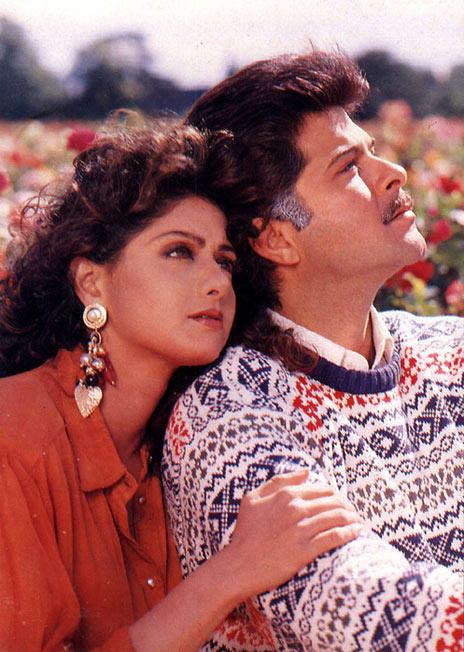
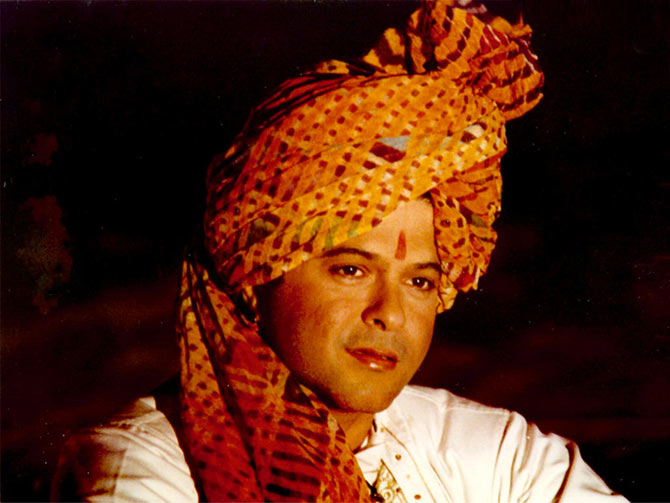
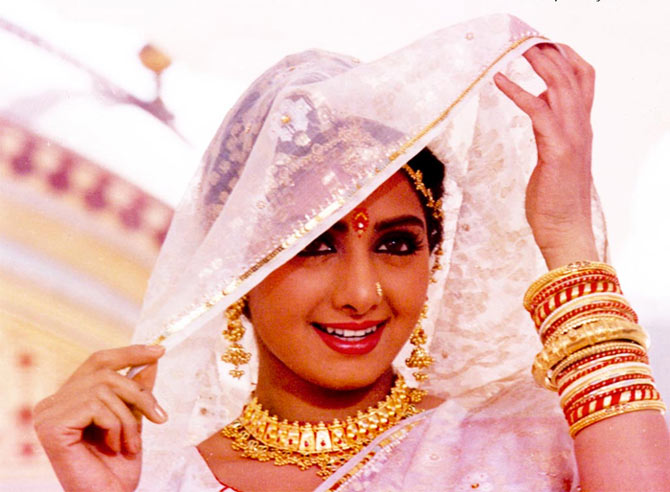

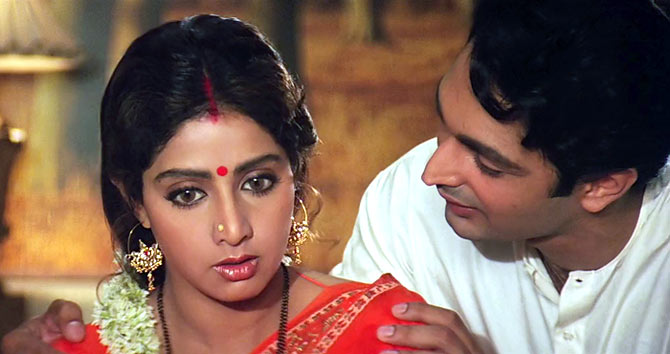
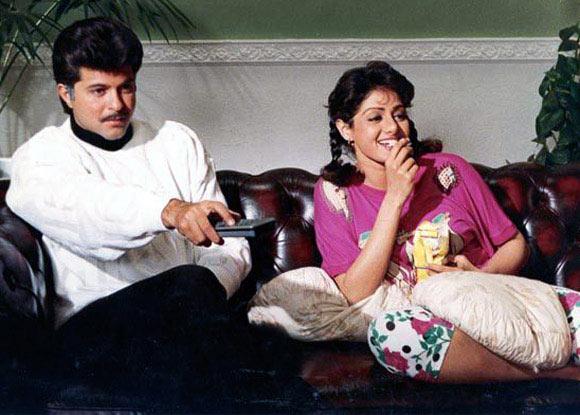
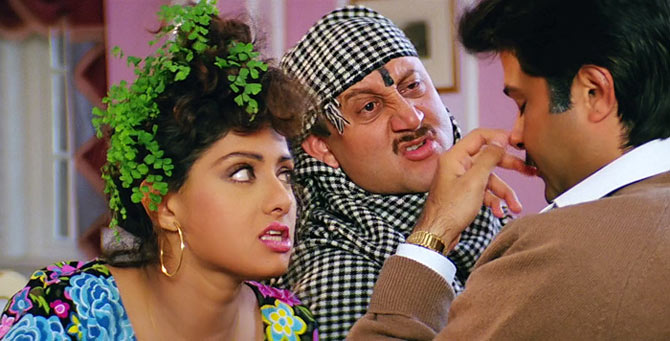
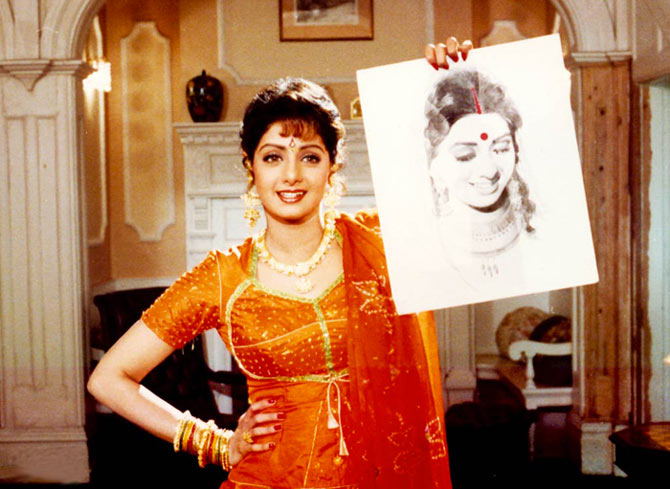
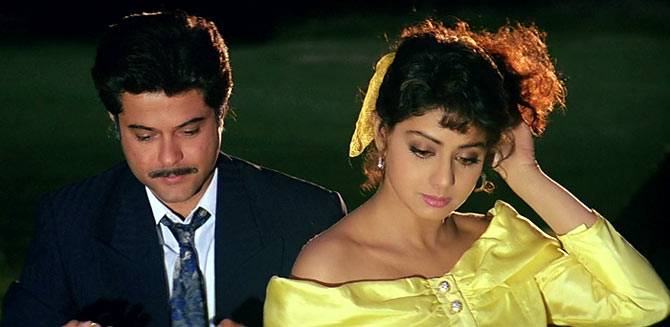
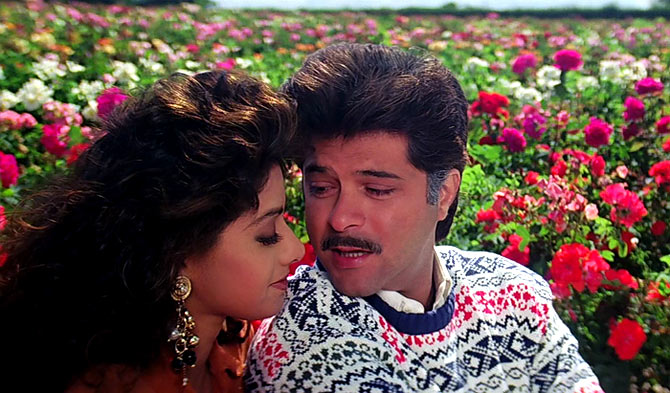
Comment
article